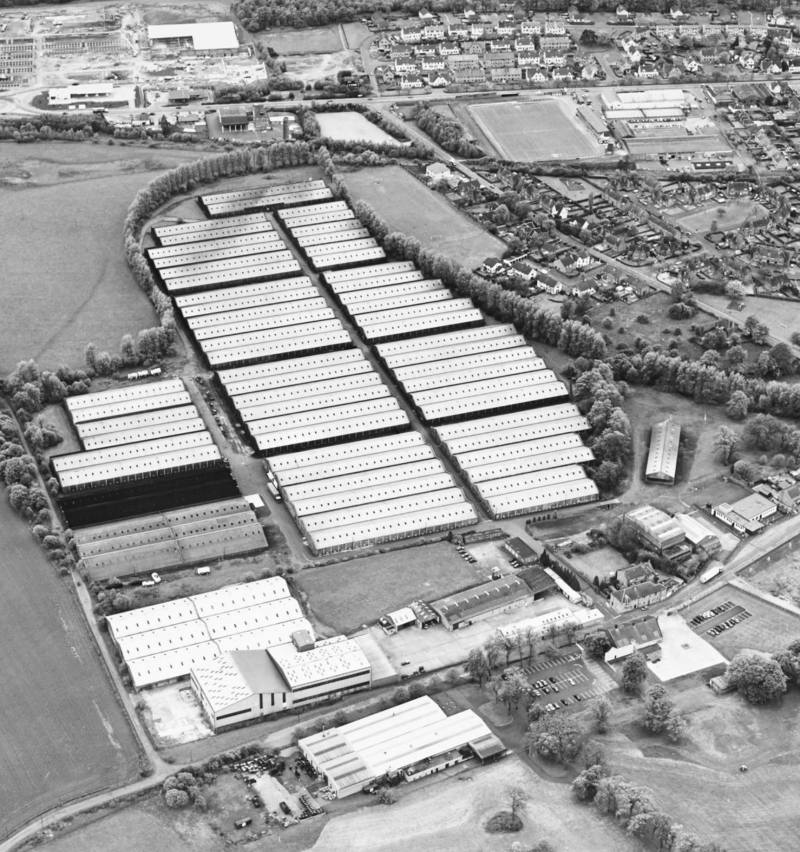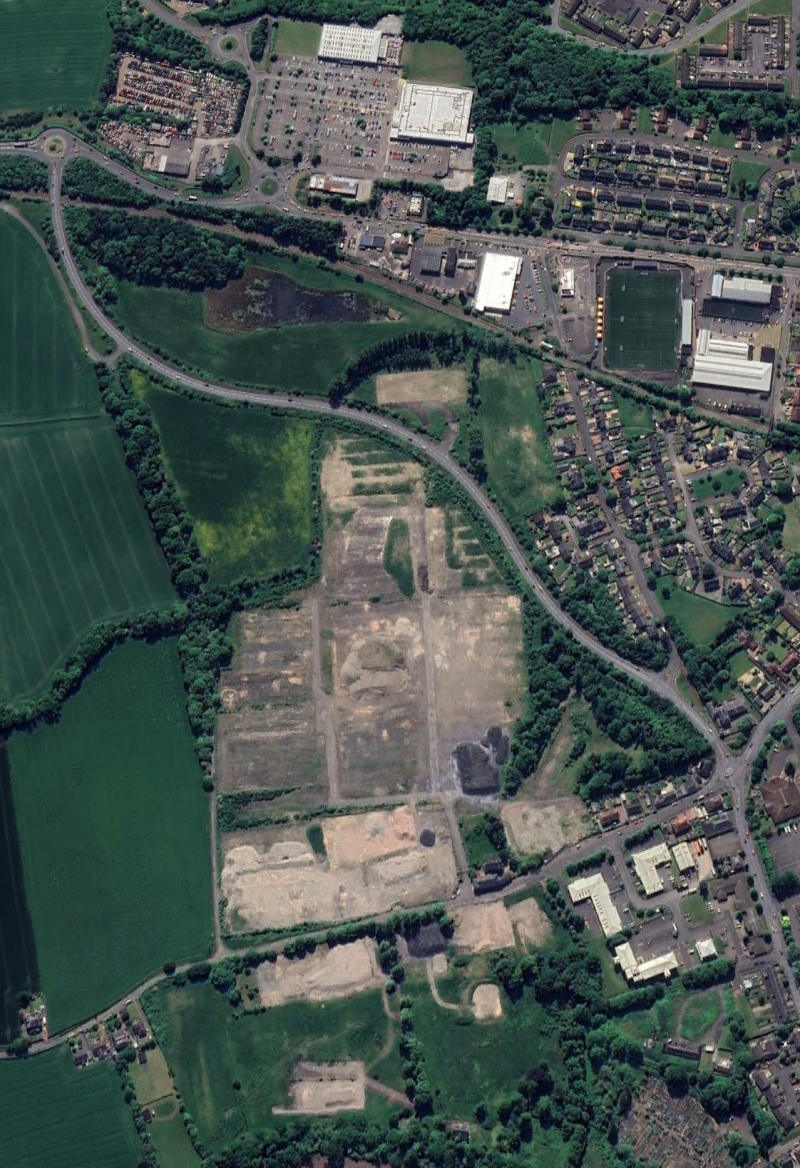When Carsebridge Distillery closed in 1983, it was one of the oldest distilleries in Scotland, though it was still relatively new when compared with some of the others that had once existed in Clackmannanshire.
John Bald started his journey in distilling when he converted a brewery in Tulliallan, near Kincardine, into a small lowland malt distillery. The Tulliallan operation was not without it's troubles however, with large rivals very close-by, they were able to make it untenable to continue whisky production on the site, forcing John to look closer to home for a place to operate.
On 15th June 1798, John Bald signed a lease with John Francis Erskine, Earl of Mar, for a "field near the Carse Bridge" along with the liberty of "erecting houses and all other buildings, offices and machinery necessary for carrying on a distillery". The annual rent was "seventeen bolls and one firlot of good and sufficient Barley" and the same amount of wheat. With plentiful coal nearby, good water from Gartmorn Dam and a close proximity to Alloa harbour, the Carse Bridge site had many advantages.
1799 - Carsebridge Distillery was erected and opened in this year by John Bald, about a mile from the town of Alloa at Carse Bridge.
1813 - John Bald forms John Bald & Co. to operate the distillery.
1821 - The site is noted as having a 736 gallon wash still and having produced 29,474 gallons of spirit between November 1820 and February 1821^.
1844 - Following John's death, the distillery was taken over by his son Robert.
1846 - Robert's brother John acquires the distillery. He later becomes known as John ‘the Politic’ Bald.
1852 - Carsebridge shifted away from malt whisky production to grain distilling by installing two Coffey stills.
1856 - John Bald & Co. was part of a ‘Trade Arrangement for one year’ among the six largest grain distillers – Caledonian, Carsebridge, Seggie, Glenochil, Cambus and Haddington, to distribute market share.
1857 - Total Scottish grain whisky production had reached 7,500,000 gallons per year, overtaking malt whisky production.
1865 - A second trade agreement is signed, this time with the addition of Adelphi and Yoker distilleries, Cameronbridge, which replaced Seggie, and Port Dundas, which replaced Haddington.
1877 - Carsebridge becomes one of the six Lowland grain distilleries to found Distillers Company Limited (DCL).
1886 - Alfred Barnard visited the distillery, of which he said: "the works are very extensive, and cover altogether ten acres of ground". There were "thirteen pairs of stones" in the Mill, and in the tun room he saw "ranged, like opposing armies, twenty fine washbacks, of imposing size and capacity". The still-houses had "two elegant Coffey's patent stills" and the engine room had "14 engines, combining in all 400-horse power".
At that time it was possibly the second largest grain distillery in Scotland. Barnard also commented on the fire precautions; e.g. each still separately housed with a giant cistern above, so that water could be deluged on any fire below. There was also a Shand & Mason fire engine and a trained fire brigade of 40 men. The local burgh council had a deal with the distillery securing the use of the engine when required.

1888 - Production from the distillery was now one of the highest in Scotland, with annual output ranging from 1.4 to 1.7 million gallons of spirit per year.
1902 - The distillery is gutted by fire and forced to halt production for 9 months, at a cost of £40,000.
At some point after the end of World War I, there was a major re-fit of the distillery.
1927 - Carsebridge began producing several hundred tons of dried yeast per year. An account from that year refers proudly to state-of-the-art electrical installations, a mechanical coal-handling plant, air-compressors, an automatic mash tun emptying system, a laboratory, extensive refrigeration facilities for yeast and a modern suction drying machine; "the machinery of the works is singing a merry industrial song all the day and night long", although the paper points out that "the day work in the yeast department is done by girls, but the night shifts are filled by men".
1938 - Yeast production ends at Carsebridge (likely taken over by the nearby Glenochil yeast facility).
1956 - The distillery is modernised with a new cooperage, feedstuff plant and still house.
1966 - The floor maltings is removed to make way for further expansion and the distillery was transferred to Scottish Grain Distillers.
1980 - Carsebridge is expanded and becomes the largest grain distillery in Scotland, with three Coffey stills.
1983 - In spite of the recent expansion Carsebridge was mothballed amidst a whisky glut in the industry.
1992 - The distillery was stripped for scrap metal and the distillery buildings were demolished. Several warehouses remained on the site, along with the cooperage.

Carsebridge site May 1998 - Canmore.org.uk
2008 - A relief road is driven through part of the site to allow easier access to Sauchie and the hillfoots from the south-east of the county as part of the railway reopening work.

Carsebridge site 2018 - Google Earth
2011 - The cooperage is moved to the site of the former Cambus Distillery.
2019 - The remaining storage warehouses are emptied and the site officially closes after 220 years.
2022 - Almost all** of the buildings are demolished to clear the land for new housing development.

Carsebridge site June 2023 - Google Earth
At one time the site had two huge granaries holding 3000 tons of grain, four kilns, a mash house with seven mash tuns, 25 washbacks and two separate still houses. Storage for the spirit was in four large vats with a total capacity of 23,000 gallons and there were twelve bonded warehouses on the site.
If anyone can provide further information on this, we would like to hear from you.
** Angela Watt from Resonate Together emailed in :-
"...there are still two remaining buildings on the site: Ochil House and Harvey House. Which we, the charity Resonate Together, are saving due to our community wishing to keep these buildings and the history. We currently are looking after the 2,000 year old Napoleons Pillar too. Which is a listed item and was moved down to this site from the Carsebridge House due to vandalism issues."
You can find out more about Resonate Together at https://resonatetogether.org.uk/
References :
Scotchwhisky.com
Alfred Barnard - The Whisky Distilleries of the United Kingdom (1887).
The Scottish Malt Whisky Society
Whiskipedia
Alloa Advertiser - A Walk in the Past
^ Parliamentary Reports from Committees, July 1821, Vol. VII
Angela Watt - Resonate Together
